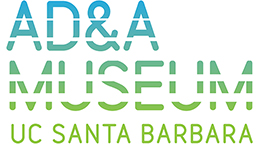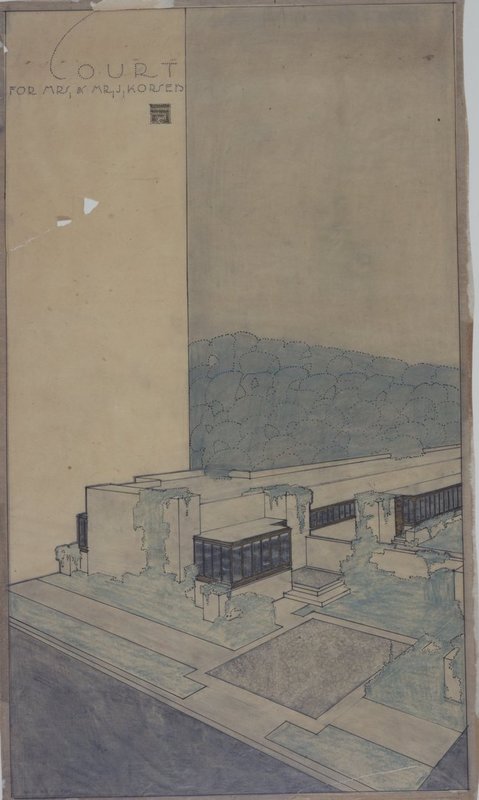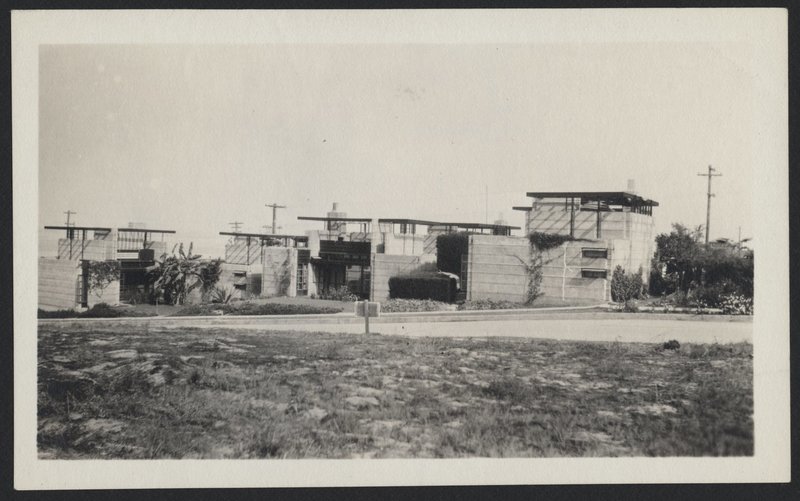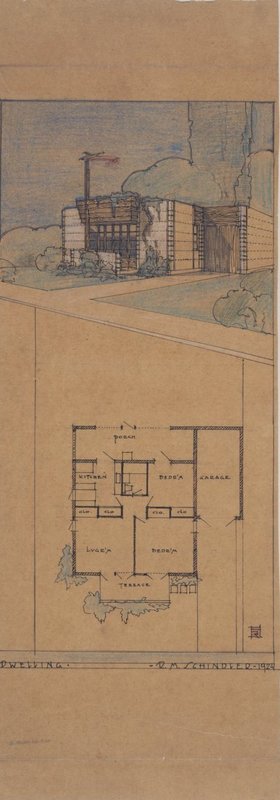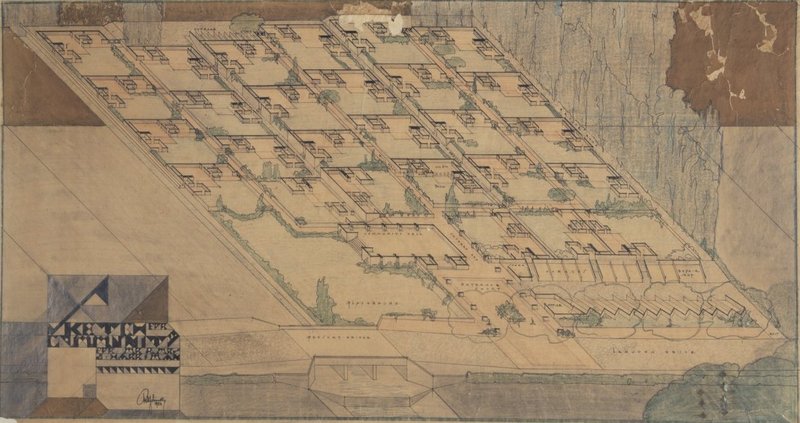1920s Multi-unit housing
In addition to the residential houses he designed for Phillip Lovell and others during the 1920s, Schindler also worked with clients and developers to design multi-family dwellings. With the large influx of new residents and long-term seasonal visitors, Los Angeles and the greater Southern California area needed affordable housing, so Schindler designed bungalow courts, apartment buildings, and planned communities (some of which were never built).
The bungalow court for Jacob Korsen was designed to have a row of five one-bedroom apartments, with garages at the back of the long, rectangular lot.
The Pueblo Ribera Court was built in La Jolla for a local dentist named W.L. Lloyd, who wanted Schindler to design low-cost rental housing for tourists and seasonal guests. The twelve units each had a ground-level living room, kitchen, bedroom, and bath, in a U-shape, with a sleeping loft on the upper level. Each unit faced its' own private patio, and the units shared an alley with garages. The upper-level sleeping porches each had a private view of the Pacific Ocean. Poured-in-place concrete and redwood were used as construction materials; unfortunately, the client's desire for a low-cost housing complex was not achieved, due to the higher cost of constructing with concrete, and numerous problems with waterproofing and repairs.
"The one instance of a Schindler design which shows a close similarity to [Irving] Gill is that for a single and double concrete house in a 'workmen's colony,' for Gould and Bandini (1924). Both the site plan and the design of the individual buildings come very close to Gill's (and Frederick Law Olmstead Jr.'s) plan and housing for Torrance, of 1916." Gebhard, p. 45
"The Harriman project was an enlarged bungalow court treated as a self-contained community, with its own stores, gas station, garages, a playground and a community hall. Six rows of twenty-seven units were grouped on six terraces which stepped down to the river. Each rectangular unit contained a walled patio (the outdoor living room) and an enclosed L-shaped space which housed in its centre a living room with a dinig nook; a kitchen and service porch made up one wing, the other containing the bedroom, dressing room, and bath." Gebhard, p.50
This rendering of Harriman's Colony is a birds-eye view of a planned community, possibly in San Gabriel. The client, Job Harriman was a lawyer and ran for mayor of Los Angeles in 1911 as a socialist. After his failed mayoral bid, Harriman started a utopian socialist community called Llano del Rio, just outside of Palmdale, California. The short lived (1915-1917) community was self-sufficient, growing their own food, creating building materials, and living a communal lifestyle.
